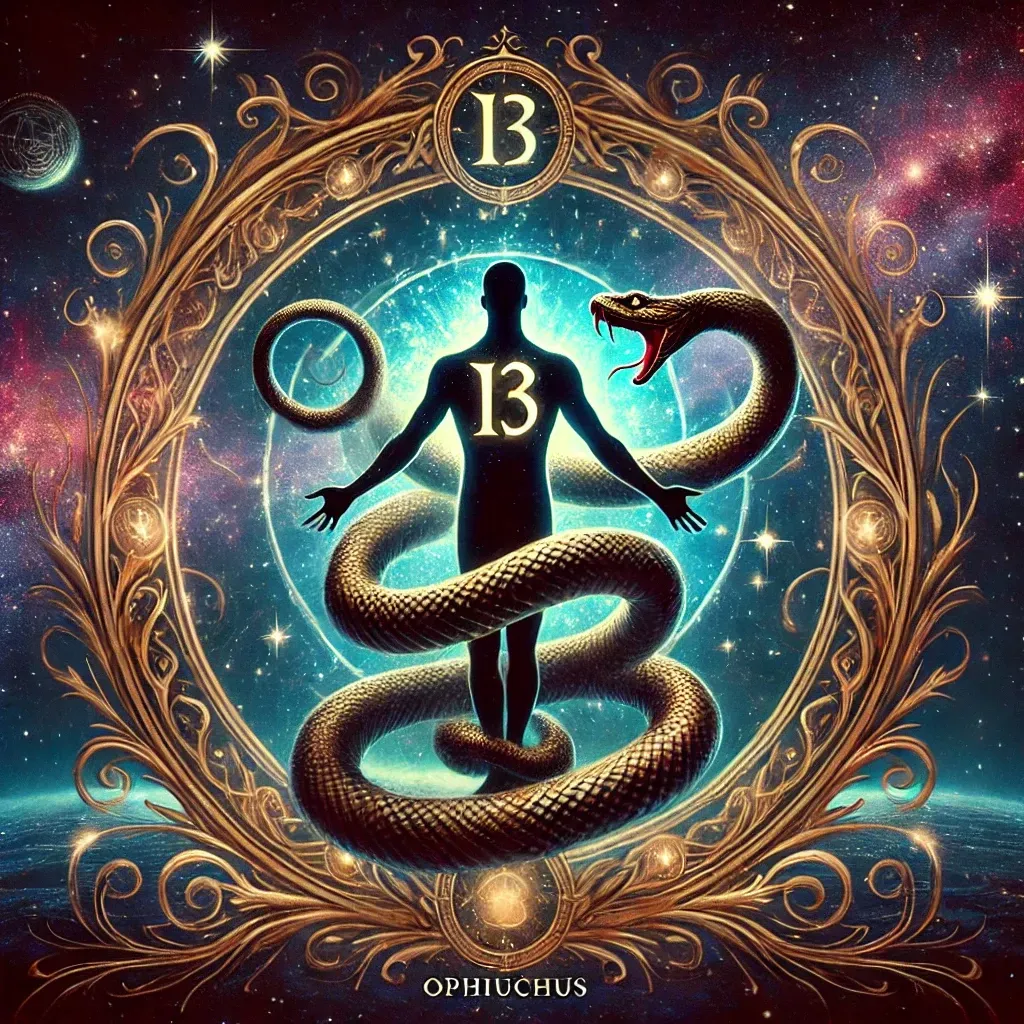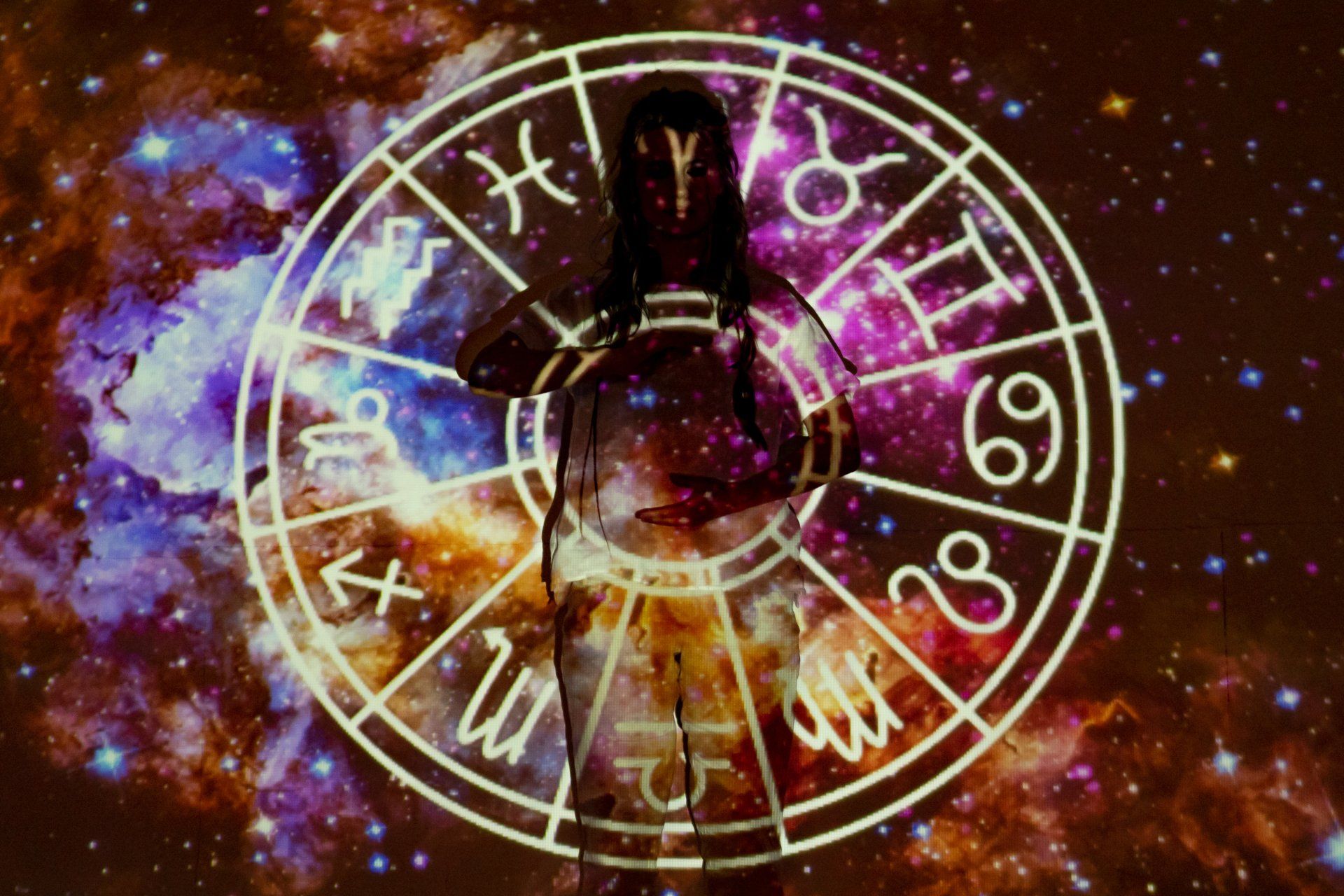The 13 Star Signs
History, Evolution, and Why We Now Have 12

Astrology has been a guiding force for centuries, offering insights into personality, fate, and the cosmic influences on our lives. Most people are familiar with the 12 zodiac signs, but a lesser-known chapter in astrology hints at an alternative system—one with 13 star signs.
This 13-sign system, shrouded in mystery and including the enigmatic Ophiuchus, has its origins in ancient astrology but was omitted from the modern zodiac. In this blog post, we'll delve into the history of the zodiac, explore why we have 12 signs today, and unravel the significance of considering Ophiuchus in the zodiac lineup.

The Origins of the Zodiac
The zodiac as we know it today dates back thousands of years to ancient Babylon. The Babylonians were among the first to divide the sky into twelve sections, each associated with a specific constellation that aligned with the sun's position at different times of the year. These twelve constellations gave rise to the zodiac signs, which correspond to specific dates on the calendar.
The Babylonians were well aware that there were actually 13 constellations that crossed the ecliptic—the path the sun follows through the sky. However, for simplicity, they chose to leave out one: Ophiuchus, the serpent-bearer. The decision was essentially pragmatic. The Babylonians used a 12-month lunar calendar, and dividing the zodiac into 12 signs made for a more convenient system, with each sign roughly corresponding to a month.

What Is Ophiuchus?
Ophiuchus, the 13th sign, is a constellation between Scorpio and Sagittarius. In mythology, Ophiuchus is often associated with Asclepius, the Greek god of healing and medicine, who was said to have the power to bring people back from the dead. The symbol of Ophiuchus is typically represented by a man holding a serpent, a familiar symbol of healing even today.
According to the proposed 13-sign zodiac, Ophiuchus' dates run from November 30 to December 17, nestled between the traditional dates of Scorpio and Sagittarius. Those born under this sign are said to possess unique qualities of wisdom, healing, and intuition-qualities that align with Asclepius's mythological associations and offer a fresh perspective on the zodiac.

The 13 Star Signs and Their Dates
If we include Ophiuchus in the zodiac system, the other signs' dates shift. Here’s how the old zodiac compares with the 13-sign system:
Constellation Old Star Sign Dates New Star Sign Dates
Pisces 19 February - 21 March March 12 - April 18
Aries 21 March - 21 April April 19 - May 13
Taurus 21 April - 21 May May 14 - June 21
Gemini 21 May - 22 June June 22 - July 20
Cancer 22 June - 23 July July 21 - August 10
Leo 23 July - 23 August August 11 - September 16
Virgo 23 August - 23 September September 17 - October 30
Libra 23 September - 23 October October 31 - November 23
Scorpio 23 October - 22 November November 24 - November 29
Ophiuchus - November 30 - December 17
Sagittarius 22 November - 22 December December 18 - January 20
Capricorn 22 December - 20 January January 21 - February 16
Aquarius 20 January - 19 February February 17 - March 11

Why Was Ophiuchus Left Out?
The exclusion of Ophiuchus from the traditional zodiac was not based on a lack of importance but on practicality. The Babylonians had a 12-month lunar calendar, and having 12 signs aligned perfectly with the flow of their timekeeping. Additionally, astrology was designed to simplify the relationship between the stars and human lives. Introducing a 13th sign would have complicated this system.
Astrologers have preferred to maintain the twelve-sign zodiac over the centuries, as it offers an easily understandable, well-balanced framework. Ophiuchus, while necessary, was simply an outlier — a constellation that didn’t fit the mould of a 12-sign system. However, the 13-sign system could potentially offer a more comprehensive and accurate understanding of individual personalities and life events, providing a richer and more nuanced astrological experience.

What Would It Mean to Reintroduce Ophiuchus?
Incorporating Ophiuchus back into the zodiac sparked renewed interest when NASA made a statement about the shifting positions of constellations due to the earth's wobble (precession). However, modern Western astrologers still prefer to use the 12-sign system, which has been used for centuries to reflect a complex but coherent relationship between celestial movements and human lives.
If Ophiuchus were to be reintroduced, the dates of every other sign would be shifted, as shown in the table above. This potential change could prompt us to reconsider how we interpret and understand traditional astrological readings, sparking a deeper contemplation of the zodiac's structure and meaning.
For those born under the new dates of Ophiuchus, their personalities may be linked to qualities such as wisdom, curiosity, and healing abilities — traits deeply tied to the mythological Asclepius. However, these changes would also raise questions about the compatibility and interpretations of the other signs under the new system.

Final Thoughts
While the concept of a 13th zodiac sign has resurfaced in modern discussions, the 12-sign zodiac system remains dominant in Western astrology. Ophiuchus exists, but it reminds us that human systems, even in astrology, can be shaped by practical considerations rather than strict adherence to cosmic alignments.
Whether you follow the 12- or 13-sign system, astrology remains a fascinating and intricate tool for understanding our connections to the universe. For those identifying with Ophiuchus, it represents an intriguing intersection of forgotten history and ancient cosmic wisdom.
Sarah Kulkens











